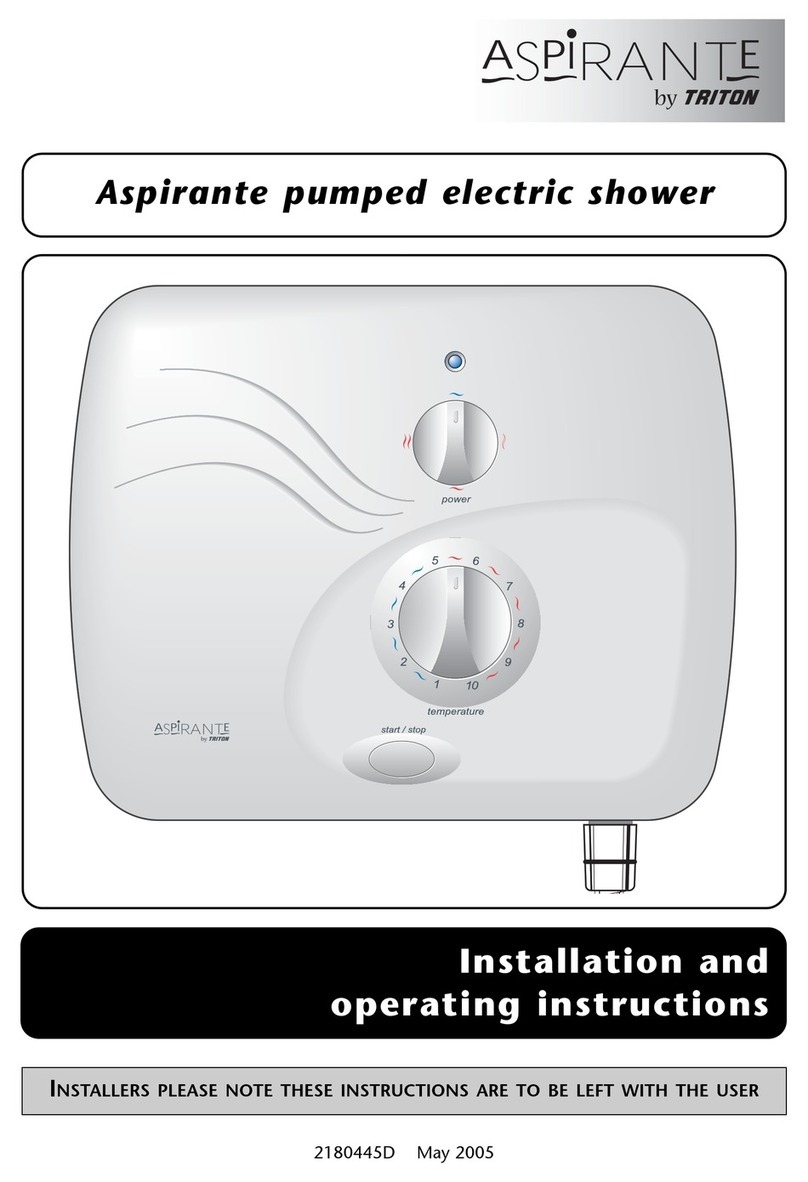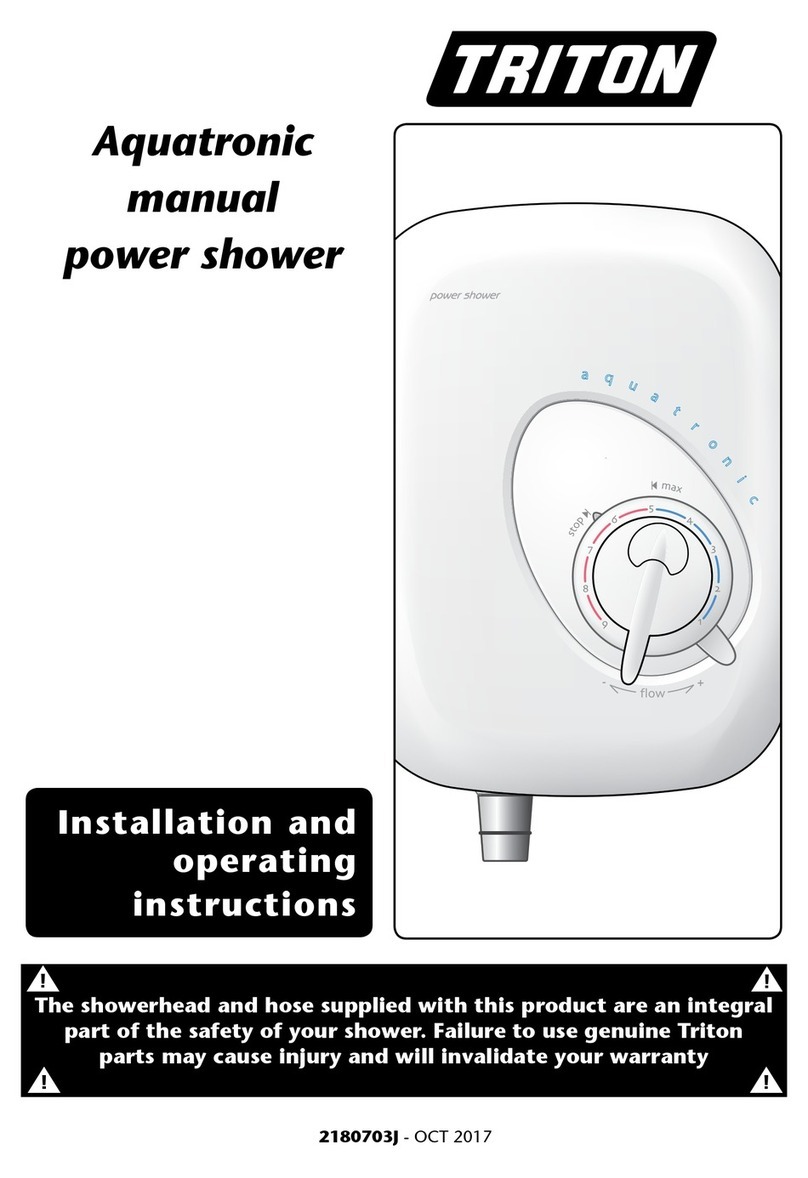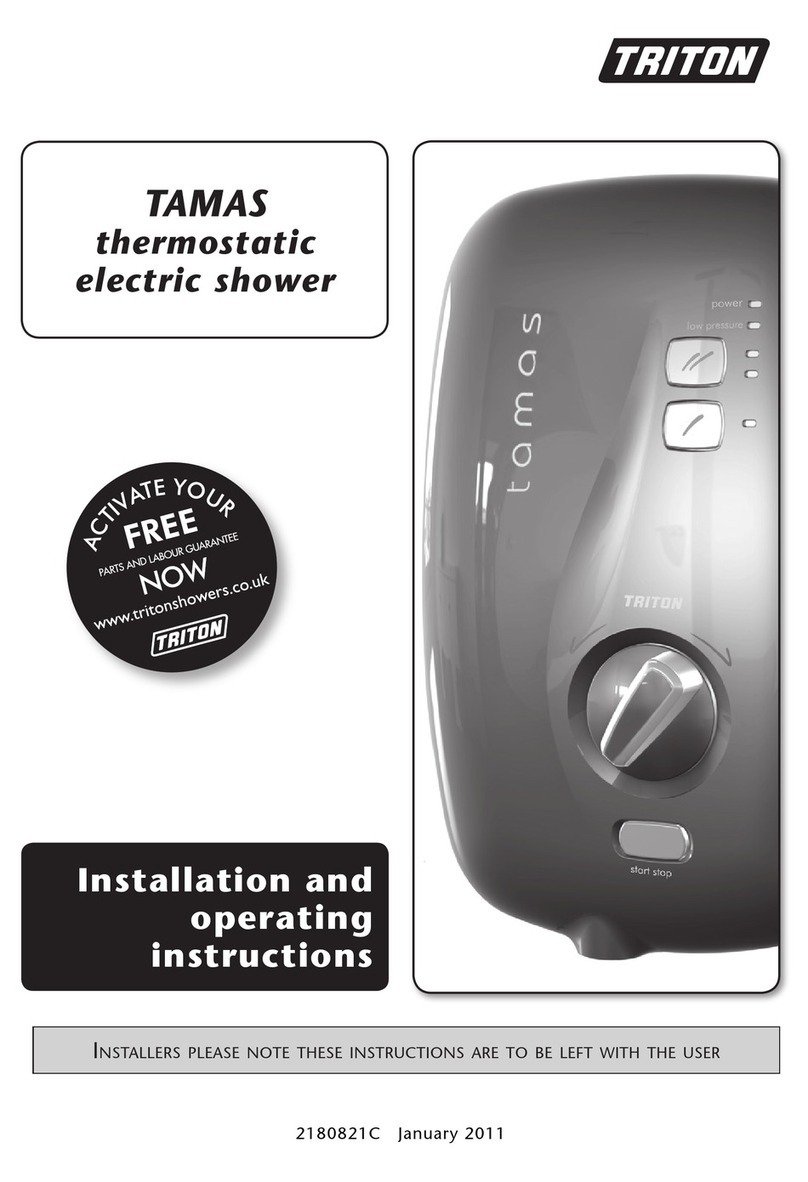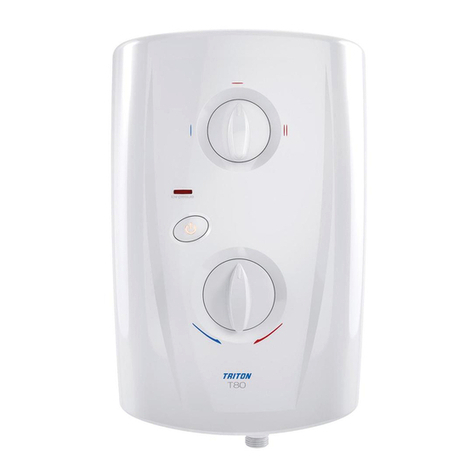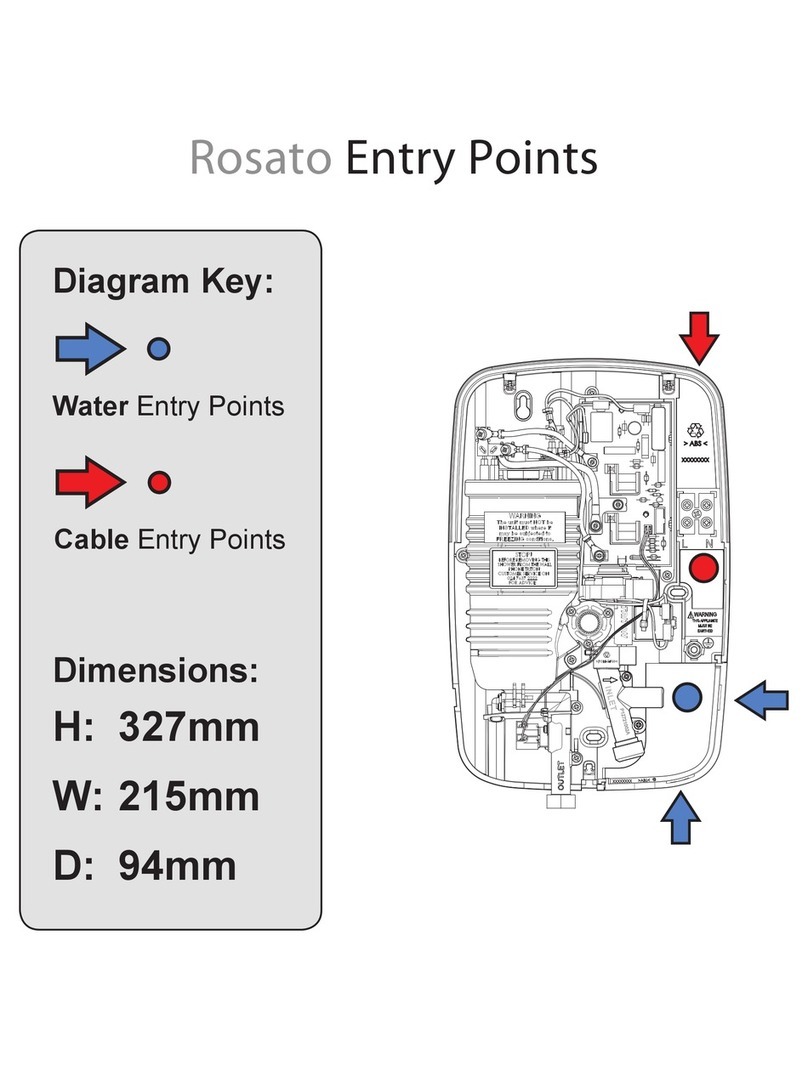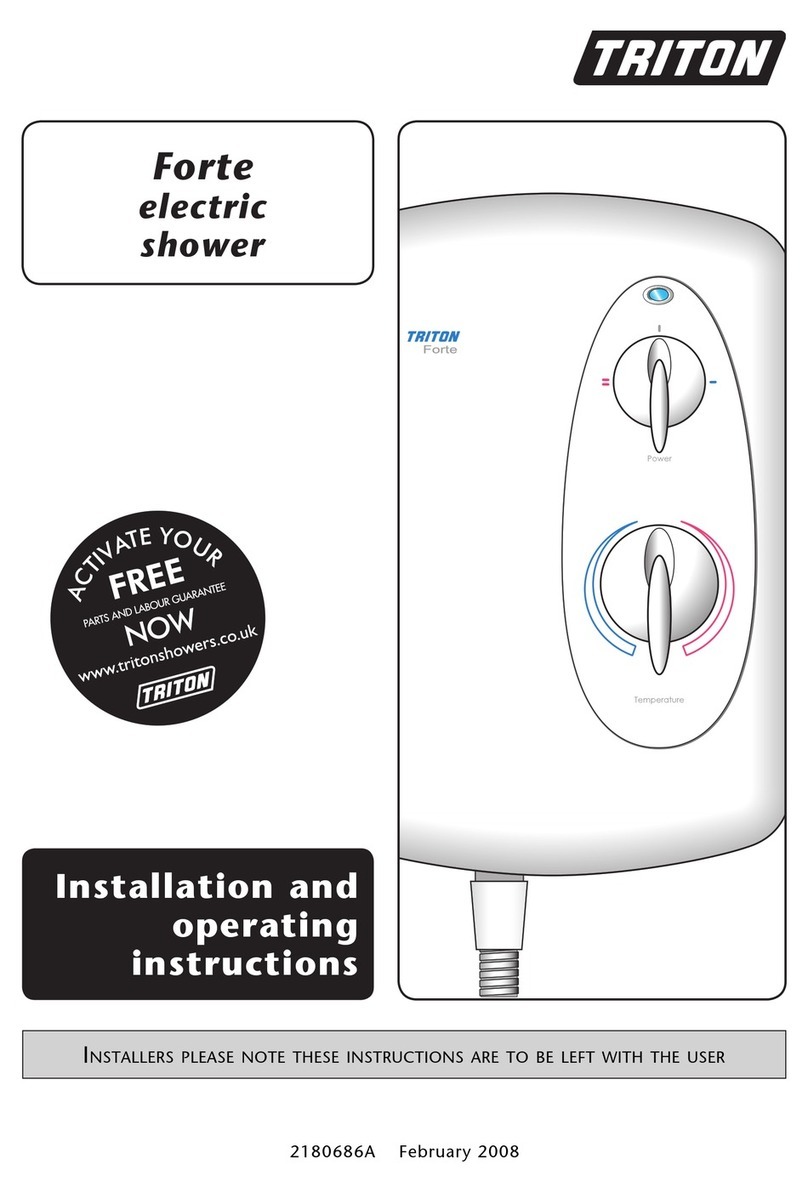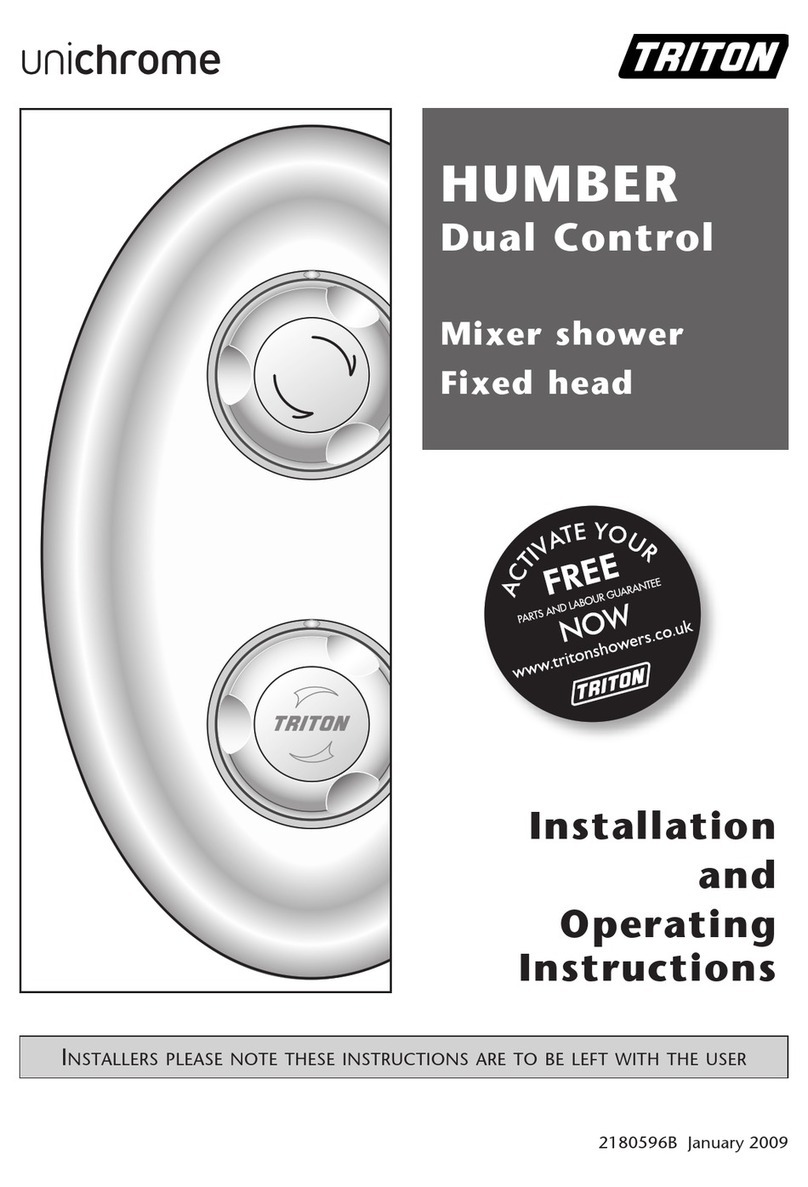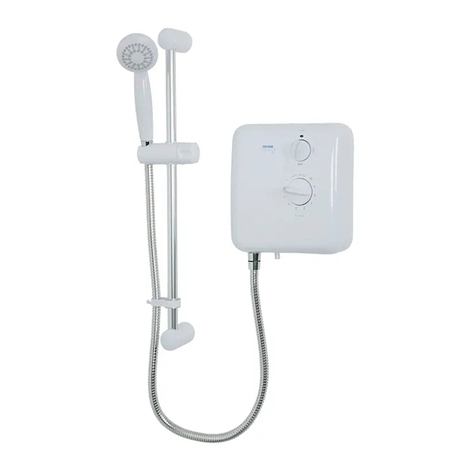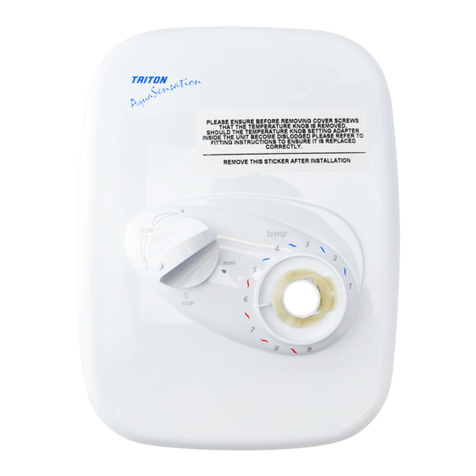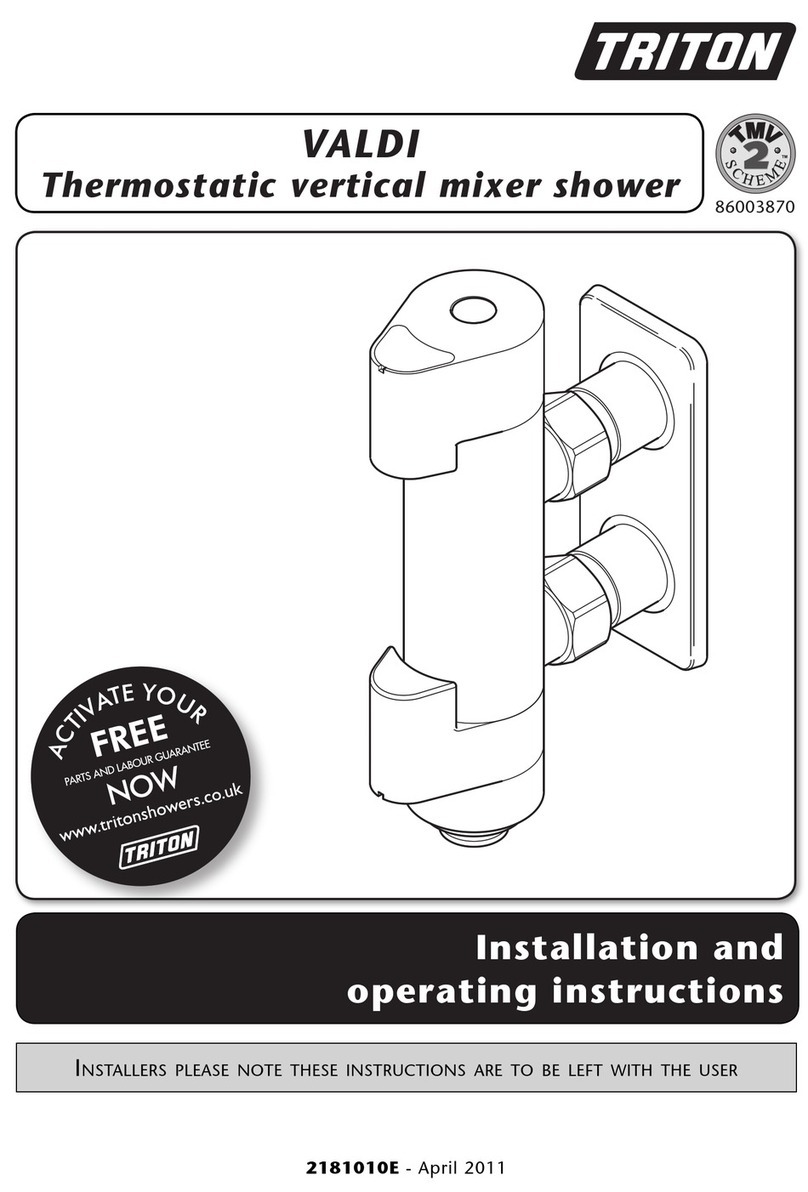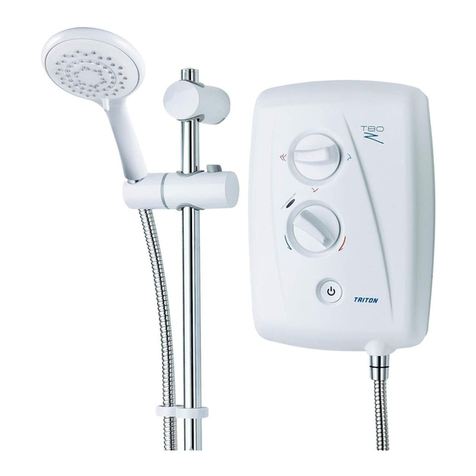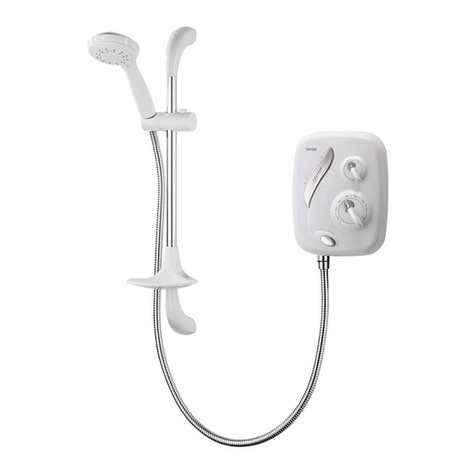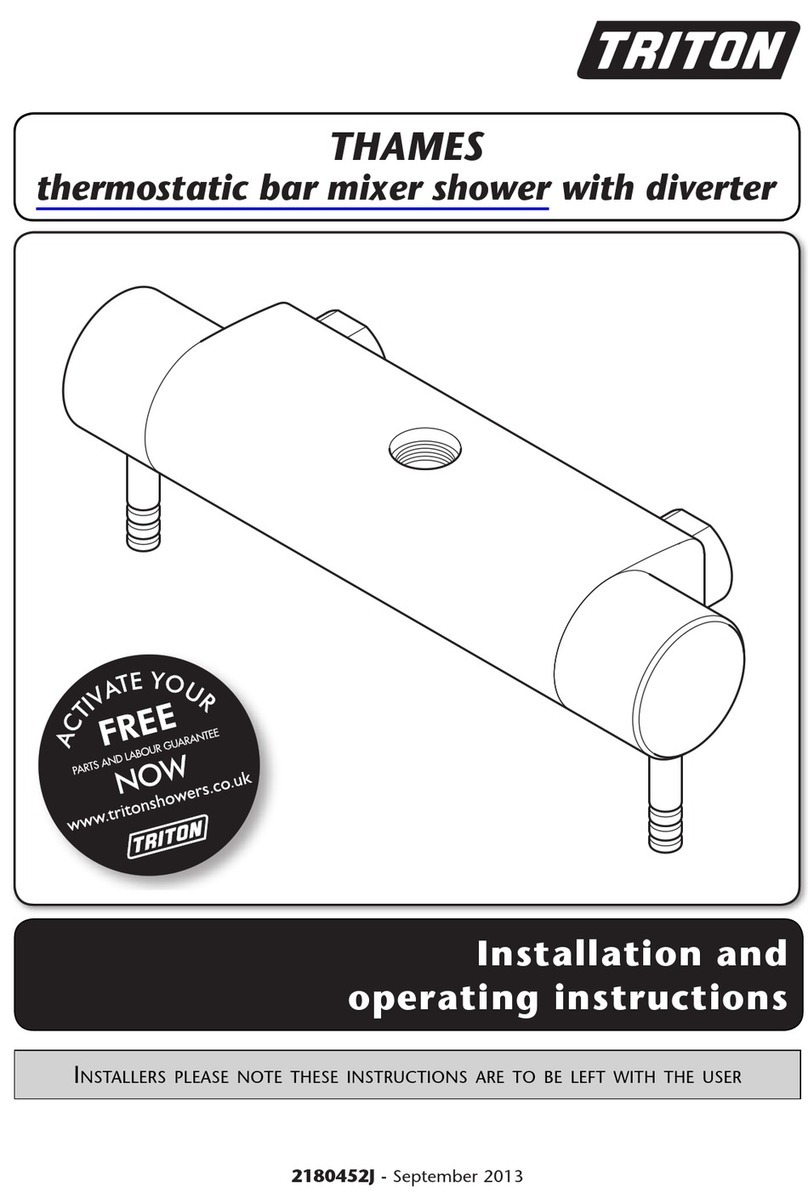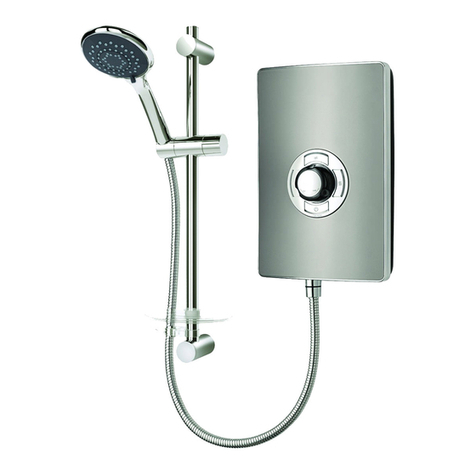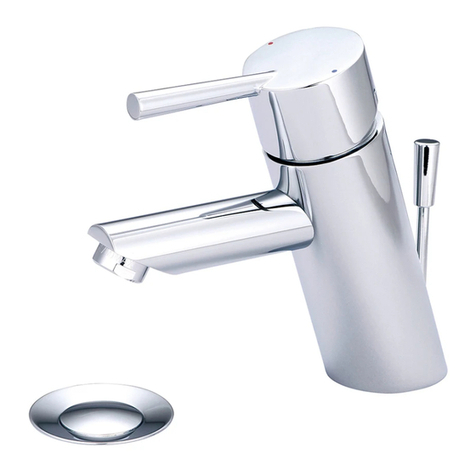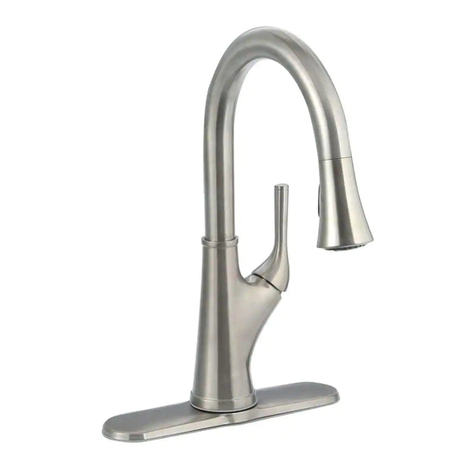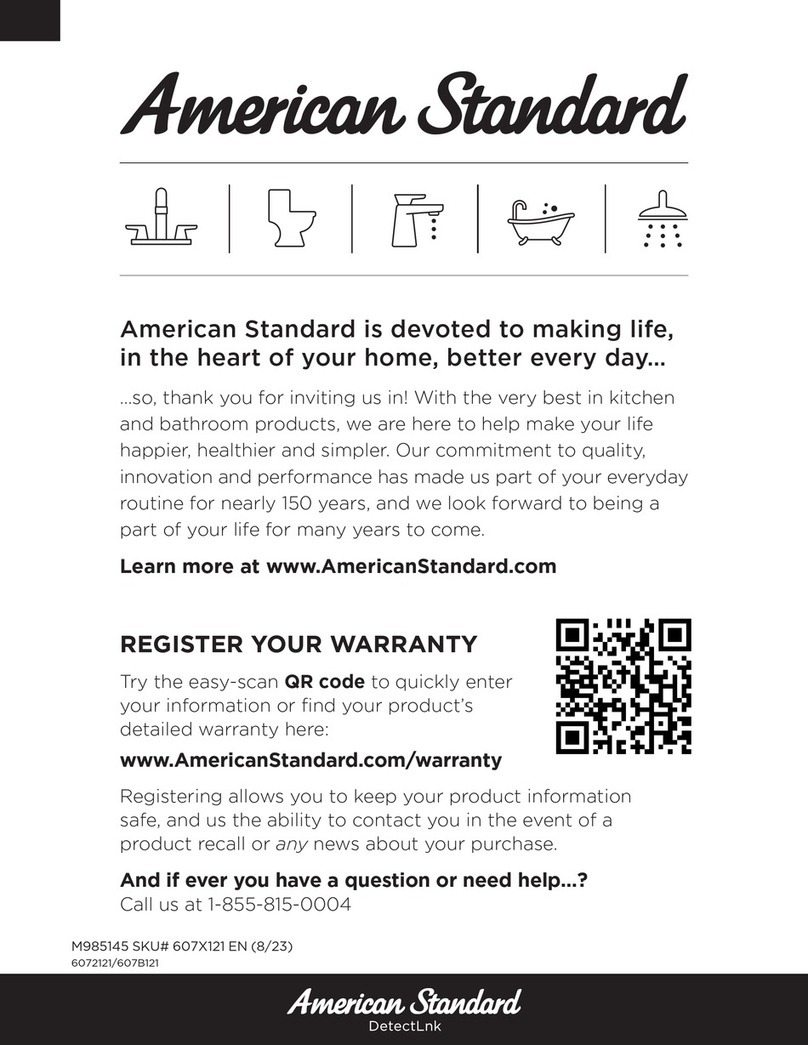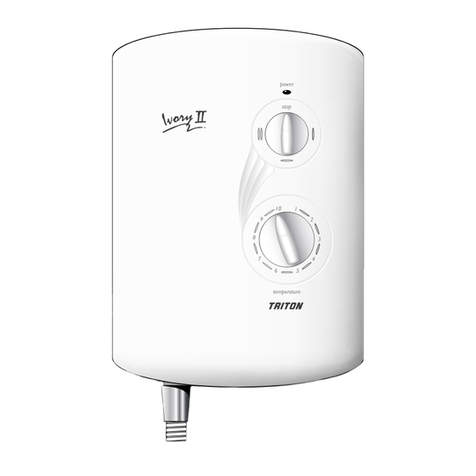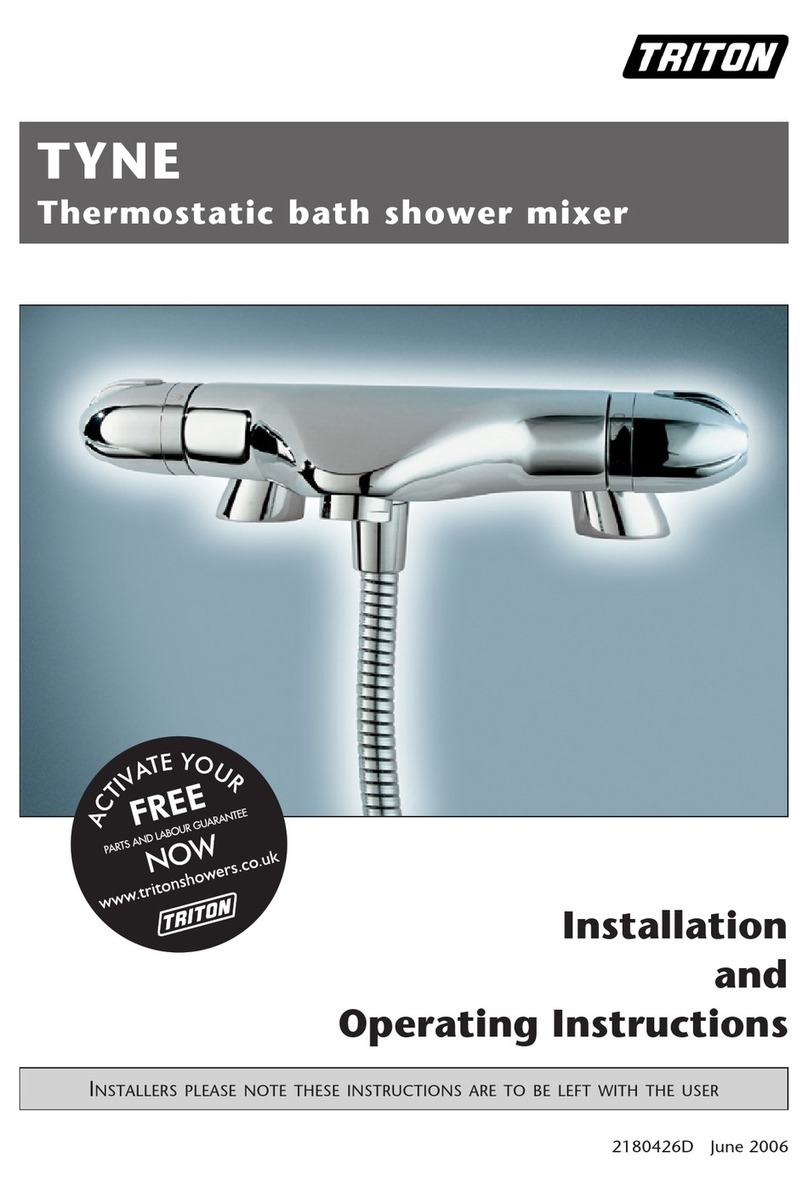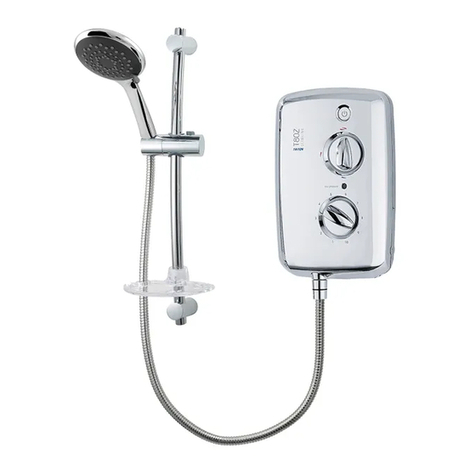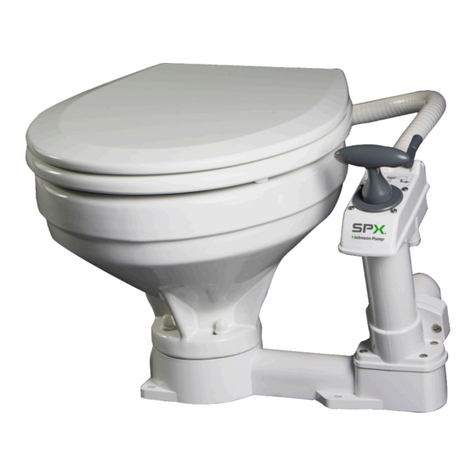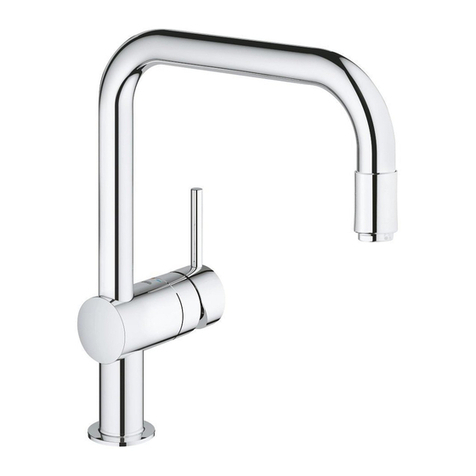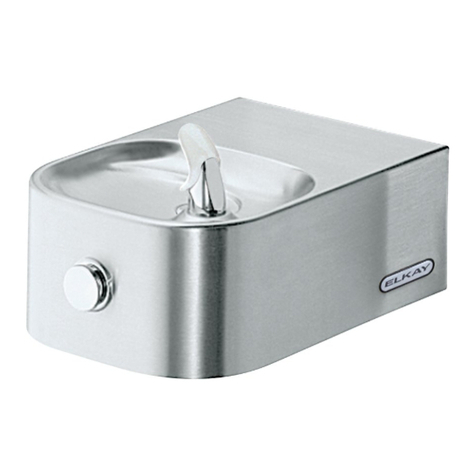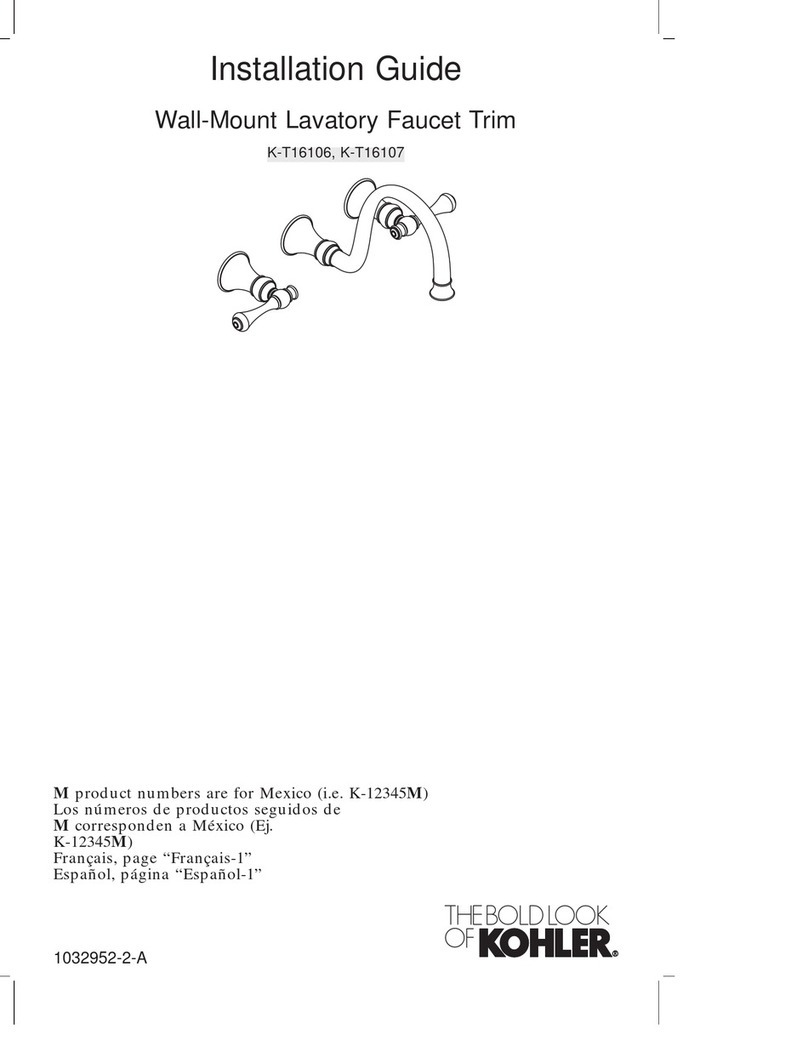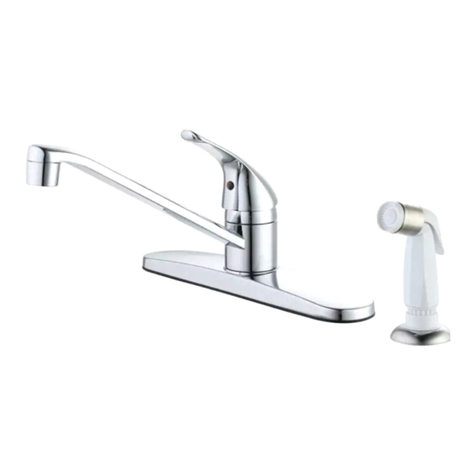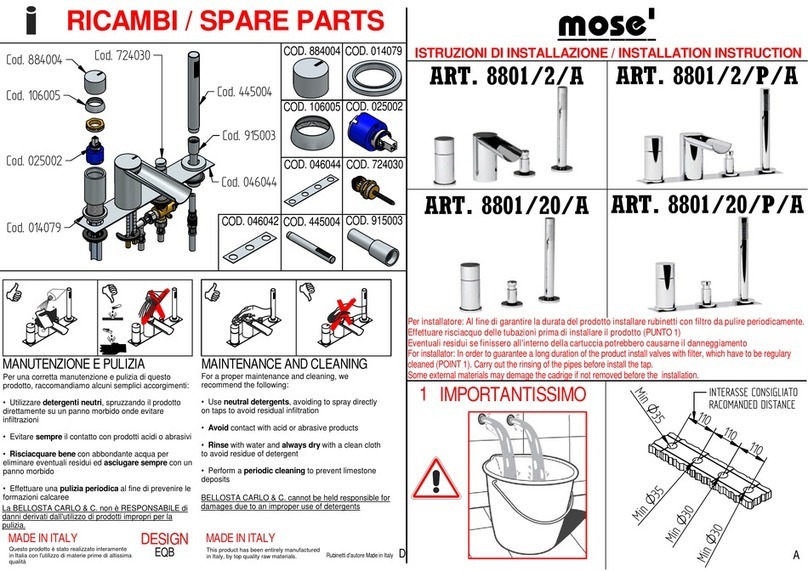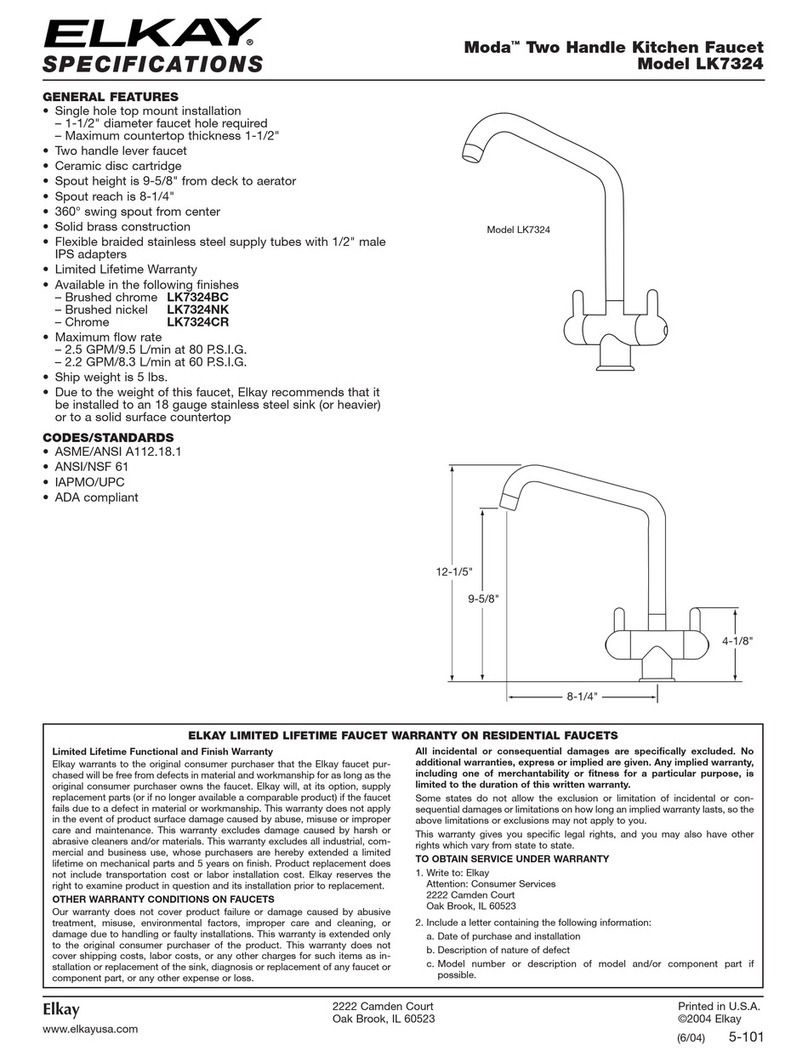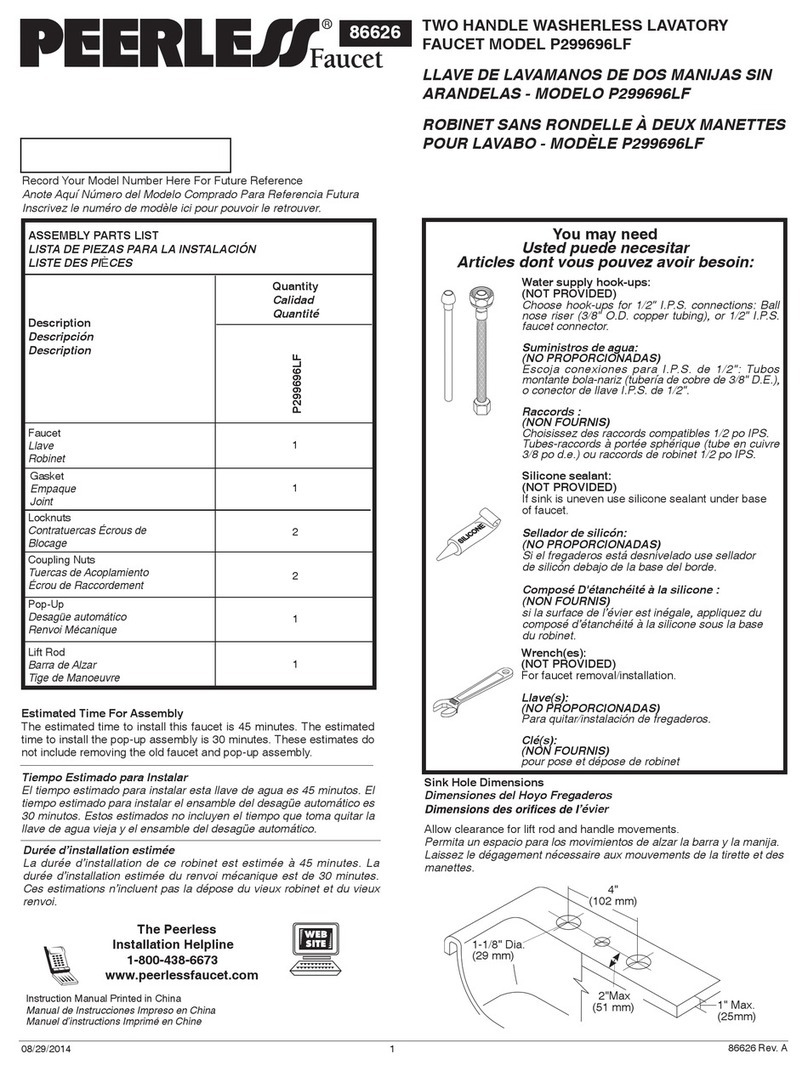
Power Shower
3
1 GENERAL
1.1 Isolate the electrical and water supplies before
removing the cover.
1.2 Read all of these instructions and retain them
for later use.
1.3 DO NOT take risks with plumbing or electrical
equipment.
1.4 Isolate electrical and water supplies before
proceeding with the installation.
1.5 The unit must be mounted onto the nished
wall surface (on top of the tiles). DO NOT tile
up to or seal around ANY PART of the unit
using silicone sealer after xing to the wall.
1.6 Contact Customer Service (see back page for
contact details), if any of the following occur:
a) If it is intended to operate the shower at
pressures above the maximum or below the
minimum stated.
b) If the unit shows a distinct change in
performance.
c) If the shower is frozen.
1.7 If it is intended to operate the shower in areas
of hard water (above 200 ppm temporary
hardness), a scale inhibitor may have to be
tted. For advice on the scale inhibitor, contact
Customer Service.
1.8 The showerhead must be cleaned regularly
with descalent to remove scale and debris.
1.9 This product is not suitable for mounting into
steam rooms or steam cubicles.
2 PLUMBING
2.1 The plumbing installation must comply with
Water Regulations, Building Regulations or any
particular regulations as specied by Local
Water Company or Water Undertakers and
should be in accordance with BS EN 806.
2.2 DO NOT connect the shower unit to the mains
cold water supply as it will damage the unit
and the installation will be in breach of water
regulations.
2.3 The supply pipe must be ushed to clear debris
before connecting to the shower unit.
2.4 DO NOT solder pipes or ttings within 300mm
of the shower unit, as heat can transfer along
the pipework and damage components.
2.5 DO NOT use excessive force when making
connections to the exible hose or
showerhead, nger tight is sufcient.
2.6 All plumbing connections must be completed
before making the electrical connections.
2.7 Water supplies must be turned on before
switching on the electricty. The shower must
not be operated dry without water.
2.8 This appliance MUST NOT be connected to
the inlet supply by a hose-set.
2.9 When installed, the top of the shower unit
must be at least 75mm lower than the base of
the cold water storage cistern to prevent the
pump being run dry without water.
2.10 A dedicated cold water supply must be taken
directly from the cold water cistern to the
shower. This draw-off must be on the opposite
side of the cistern to the oat operated valve to
reduce the risk of air entering the unit.
2.11 The action of the pump is to increase the ow
rate. If the supply pipework cannot handle the
resulting ow rate then:
2.11.1 The anticipated ow rate may not be
achieved.
2.11.2 Air may be drawn into the hot supply
from the vent pipe causing spluttering and
temperature uctuations at the showerhead.
2.12 Fullway isolating valves must be tted on the
hot and cold water supplies to the shower as
an independent means of isolating the water
supplies should maintenance or servicing be
necessary. Do not use stop taps or ball-o-x
type valves which restrict ow.
If this isolator is tted in a loft space, the loft
must have a xed access ladder and be
boarded, with appropriate lighting from the
access point to the isolator.
3 ELECTRICAL
3.1 The installation must comply with BS 7671
‘Requirements for electrical installations’ (IEE
wiring regulations), building regulations or any
particular regulations as specied by the local
Electrical Supply Company.
3.2 In accordance with ‘The Plugs and Sockets etc.
(Safety) Regulations 1994’, this appliance is
intended to be permanently connected to the
xed wiring of the electrical mains system.
3.3 Make sure all electrical connections are tight to
prevent overheating.
3.4 Fuses do not give personal protection against
electric shock. A 30mA residual current device
(RCD) MUST be installed in all UK electric and
pumped shower circuits. This may be part of
the consumer unit or a separate unit.
3.5 Switch off immediately at isolating switch if
water ceases to ow during use.
3.6 Other electrical equipment i.e. extractor fans,
pumps, must not be connected to the circuits
within the unit.
3.7 Switch off at isolating switch when not in use.
This is a safety procedure recommended with
all electrical appliances.
3.8 Do not turn on the electrical supply until the
plumbing connections have been completed.
3.9 The mains supply must be 230/240V, at 50Hz,
connected to the unit via a double pole
switched 3 Amp fused connection unit (not
supplied) with a minimum 30mm contact
separation gap in each pole.
3.10 As with all electrical appliances it is
recommended to have the shower and
installation checked at least every two years by
a competent electrician to ensure there is no
deterioration due to age and usage.
IMPORTANT - PLEASE READ THESE
GENERAL GUIDANCE NOTES BEFORE PROCEEDING
www.divapor.com




















